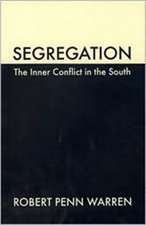Performance Ethnography: Critical Pedagogy and the Politics of Culture
Autor Norman K. Denzinen Limba Engleză Paperback – 16 oct 2003
| Toate formatele și edițiile | Preț | Express |
|---|---|---|
| Paperback (1) | 799.35 lei 6-8 săpt. | |
| SAGE Publications – 16 oct 2003 | 799.35 lei 6-8 săpt. | |
| Hardback (1) | 998.49 lei 6-8 săpt. | |
| SAGE Publications – 16 oct 2003 | 998.49 lei 6-8 săpt. |
Preț: 799.35 lei
Preț vechi: 974.82 lei
-18% Nou
Puncte Express: 1199
Preț estimativ în valută:
153.00€ • 166.25$ • 128.61£
153.00€ • 166.25$ • 128.61£
Carte tipărită la comandă
Livrare economică 22 aprilie-06 mai
Preluare comenzi: 021 569.72.76
Specificații
ISBN-13: 9780761910398
ISBN-10: 0761910395
Pagini: 336
Ilustrații: 1
Dimensiuni: 152 x 229 x 30 mm
Greutate: 0.63 kg
Ediția:New.
Editura: SAGE Publications
Colecția Sage Publications, Inc
Locul publicării:Thousand Oaks, United States
ISBN-10: 0761910395
Pagini: 336
Ilustrații: 1
Dimensiuni: 152 x 229 x 30 mm
Greutate: 0.63 kg
Ediția:New.
Editura: SAGE Publications
Colecția Sage Publications, Inc
Locul publicării:Thousand Oaks, United States
Cuprins
Acknowledgements
Preface
PART 1: PERFORMANCE ETHNOGRAPHY
Chapter 1: The Call to Performance
Chapter 2: The Language of Performance
Chapter 3: The Cinematic Society and the Reflexive Interview
Chapter 4: Toward a Performative Social Science
Chapter 5: Reading and Writing Performance
PART 2: PERFORMANCE TEXTS: BONE DEEP IN LANDSCAPES
Chapter 6: Two-Stepping in the '90s
Chapter 7: Mother and Mickey
Chapter 8: Performing Montana
Chapter 9: Rock Creek History
Chapter 10: Cowboys and Indians
Chapter 11: Redskins and Chiefs
Chapter 12: Searching for Yellowstone
PART 3: PEDAGOGY, POLITICS AND ETHICS
Chapter 13: Critical Performance Pedagogy
Chapter 14: Performance Ethics
Bibliography
Index
About the Author - `
Preface
PART 1: PERFORMANCE ETHNOGRAPHY
Chapter 1: The Call to Performance
Chapter 2: The Language of Performance
Chapter 3: The Cinematic Society and the Reflexive Interview
Chapter 4: Toward a Performative Social Science
Chapter 5: Reading and Writing Performance
PART 2: PERFORMANCE TEXTS: BONE DEEP IN LANDSCAPES
Chapter 6: Two-Stepping in the '90s
Chapter 7: Mother and Mickey
Chapter 8: Performing Montana
Chapter 9: Rock Creek History
Chapter 10: Cowboys and Indians
Chapter 11: Redskins and Chiefs
Chapter 12: Searching for Yellowstone
PART 3: PEDAGOGY, POLITICS AND ETHICS
Chapter 13: Critical Performance Pedagogy
Chapter 14: Performance Ethics
Bibliography
Index
About the Author - `
Notă biografică
Descriere
In Performance Ethnography, one of the world's most distinguished authorities on qualitative research, established the initial published connection of performance narratives with performance ethnography and autoethnography; the linkage of these formations to critical pedagogy and critical race theory; and the histories of these formations, and shown how they may be connected.
Performance Ethnography is divided into three parts. Part I covers pedagogy, ethnography, performance, and theory as the foundation for a performative social science. Part II addresses the worlds of family, nature, praxis, and action, employing a structure that is equal parts memoir, essay, short story, and literary autoethnography. Part III examines the ethics and practical politics of performance autoethnography, anchored in the post-9/11 discourse in the United States. The amalgam serves as an invitation for social scientists and ethnographers to confront the politics of cultural studies and explore the multiple ways in which performance and ethnography can be both better understood and used as mechanisms for social change and economic justice.
.
Performance Ethnography is divided into three parts. Part I covers pedagogy, ethnography, performance, and theory as the foundation for a performative social science. Part II addresses the worlds of family, nature, praxis, and action, employing a structure that is equal parts memoir, essay, short story, and literary autoethnography. Part III examines the ethics and practical politics of performance autoethnography, anchored in the post-9/11 discourse in the United States. The amalgam serves as an invitation for social scientists and ethnographers to confront the politics of cultural studies and explore the multiple ways in which performance and ethnography can be both better understood and used as mechanisms for social change and economic justice.
.











